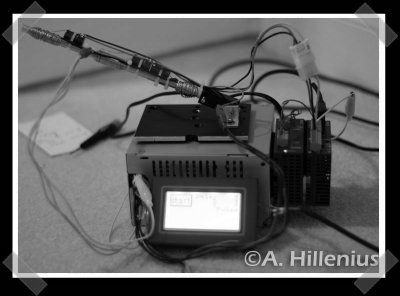
One of the best parts of building a coil gun is seeing just how fast you can get that slug to move through the air. [Daniel] built this speed meter to be able to see exactly that. It is comprised of two optical sensors, one at each end of a barrel. As the projectile passes them, its speed is calculated using an Atmega16. Since the distance between the sensors is pre determined, its only some simple math to figure out the speed of an object passing between them. The result is then displayed on a nice looking blue LCD.
If the blue accent lighting and acrylic stylings look familiar, that’s because we’ve seen [Daniel] before. He’s the one that built the portable coil pistol.
[via HackedGadgets]
















